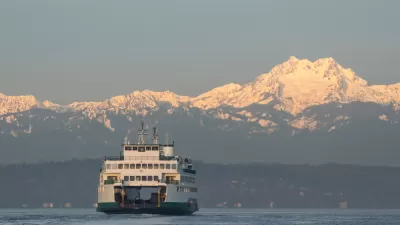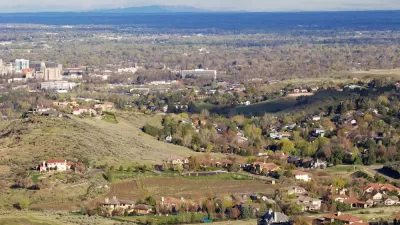The density debate can't be avoided in fast-growing Utah, according to the researchers and political leaders who support the findings of a new report from the University of Utah's Kem C. Garner Policy Institute.

Tony Semerad reports: "With Utah’s housing shortage now reaching crisis worsened by the pandemic, researchers at the University of Utah have published a new guide to help cities encourage more homebuilding at more accessible prices — including some ideas not always popular with existing residents."
The Salt lake City Chamber of Commerce sponsored the research from the University of Utah's Kem C. Garner Policy Institute. The research provides a list of best practices, led, according to Semerad, by rezoning land to allow for higher-density development. According to the study, all the other recommended best practices depend on adding new density. "[W]ithout it, the institute’s economic analysts say, there is 'little chance' Utah’s cities and towns will get ahead of the problem," according to Semerad.
The article provides context for the density debate and also provides an explanation of the concepts behind transit oriented development—the latter is presented as am alternative to automobile-oriented sprawl.
"The U. study touts American Fork and Farmington, in particular, for significant successes in building major developments around their FrontRunner stops, with housing for residents in a variety of economic and social circumstances. South Salt Lake has seen similar advances, it says, with new zoning along TRAX lines, the S-Line streetcar routes and in its city center," writes Semerad.
FULL STORY: There are ways Utah cities can boost affordable housing. But some residents may not like them.

Alabama: Trump Terminates Settlements for Black Communities Harmed By Raw Sewage
Trump deemed the landmark civil rights agreement “illegal DEI and environmental justice policy.”

Planetizen Federal Action Tracker
A weekly monitor of how Trump’s orders and actions are impacting planners and planning in America.

The 120 Year Old Tiny Home Villages That Sheltered San Francisco’s Earthquake Refugees
More than a century ago, San Francisco mobilized to house thousands of residents displaced by the 1906 earthquake. Could their strategy offer a model for the present?

In Both Crashes and Crime, Public Transportation is Far Safer than Driving
Contrary to popular assumptions, public transportation has far lower crash and crime rates than automobile travel. For safer communities, improve and encourage transit travel.

Report: Zoning Reforms Should Complement Nashville’s Ambitious Transit Plan
Without reform, restrictive zoning codes will limit the impact of the city’s planned transit expansion and could exclude some of the residents who depend on transit the most.

Judge Orders Release of Frozen IRA, IIJA Funding
The decision is a victory for environmental groups who charged that freezing funds for critical infrastructure and disaster response programs caused “real and irreparable harm” to communities.
Urban Design for Planners 1: Software Tools
This six-course series explores essential urban design concepts using open source software and equips planners with the tools they need to participate fully in the urban design process.
Planning for Universal Design
Learn the tools for implementing Universal Design in planning regulations.
Clanton & Associates, Inc.
Jessamine County Fiscal Court
Institute for Housing and Urban Development Studies (IHS)
City of Grandview
Harvard GSD Executive Education
Toledo-Lucas County Plan Commissions
Salt Lake City
NYU Wagner Graduate School of Public Service





























